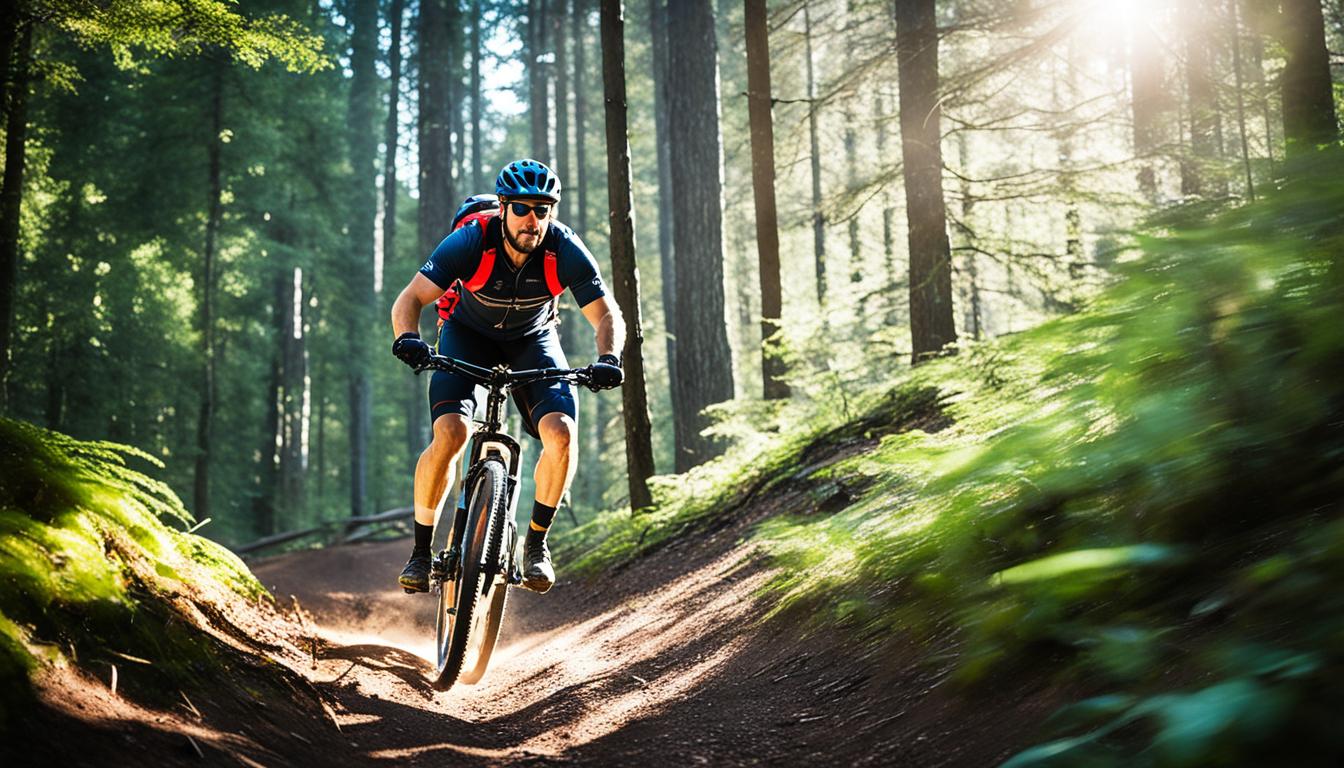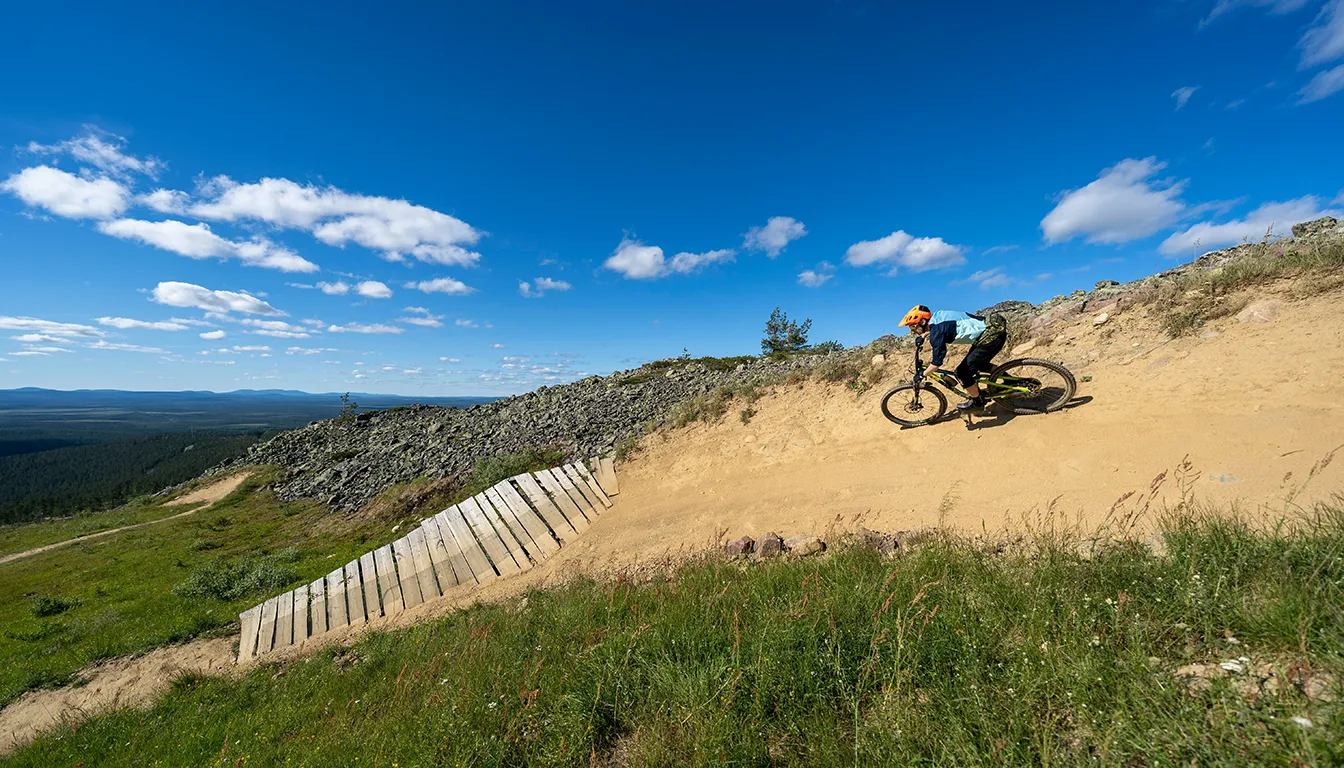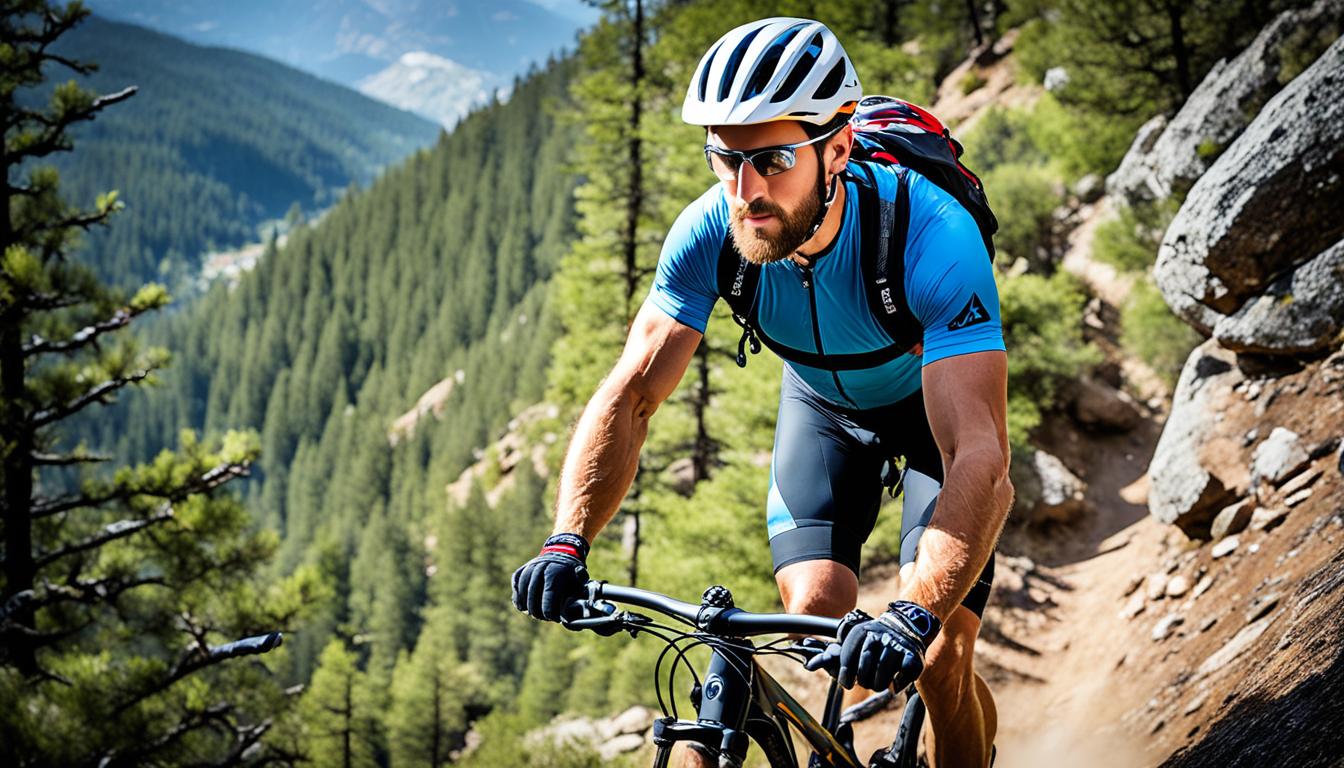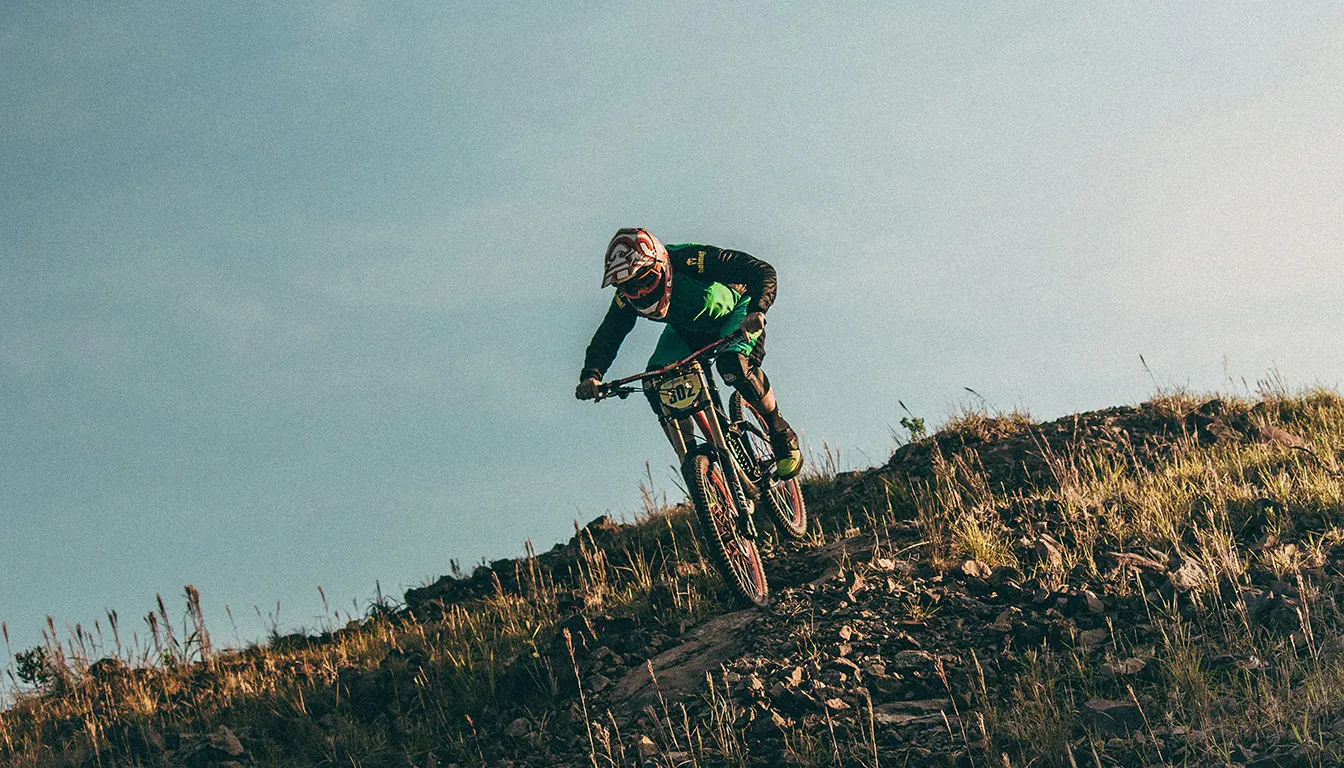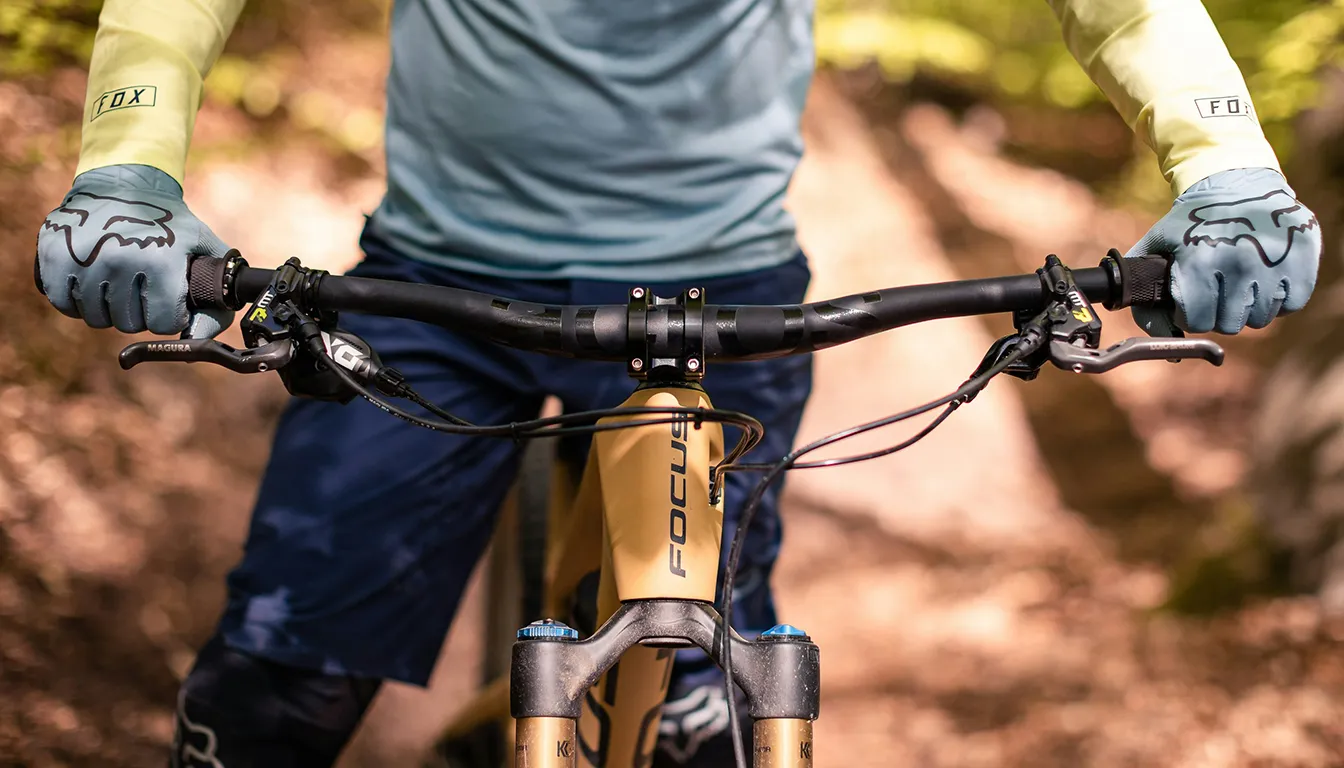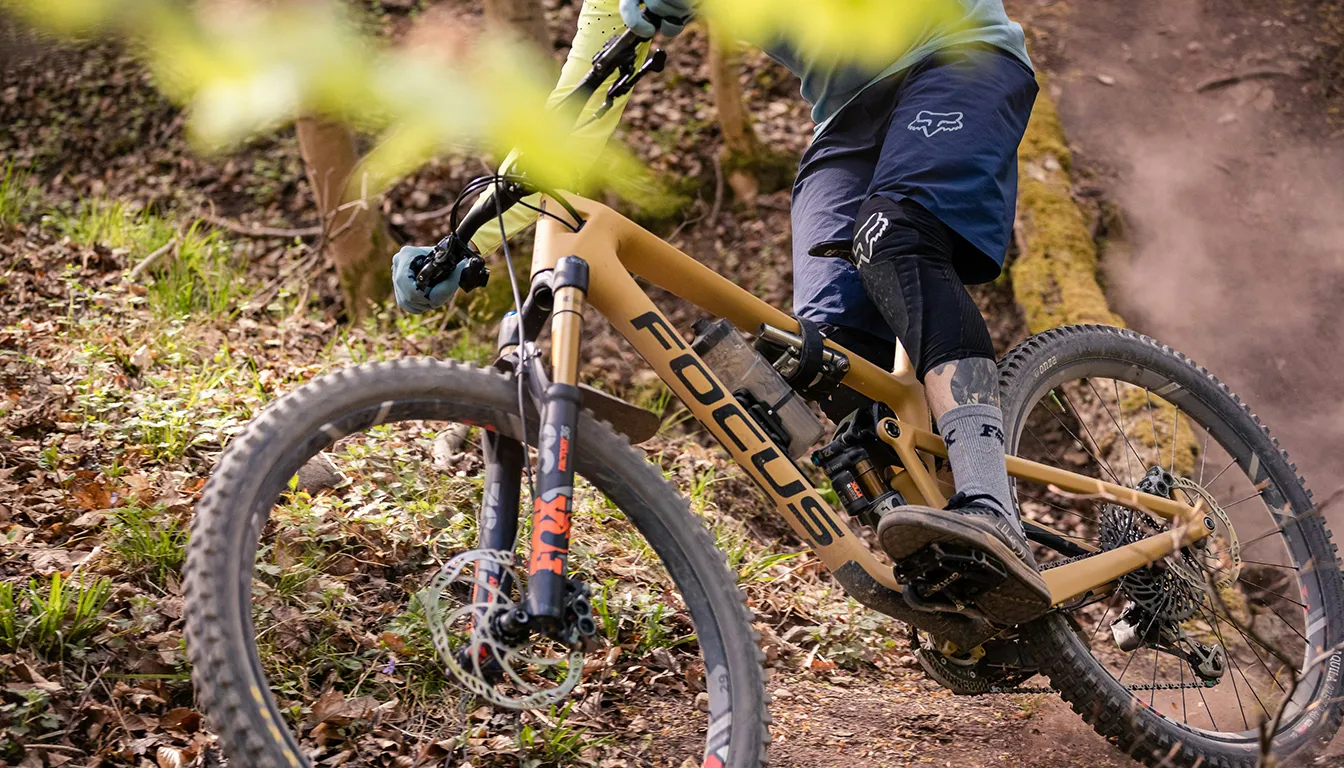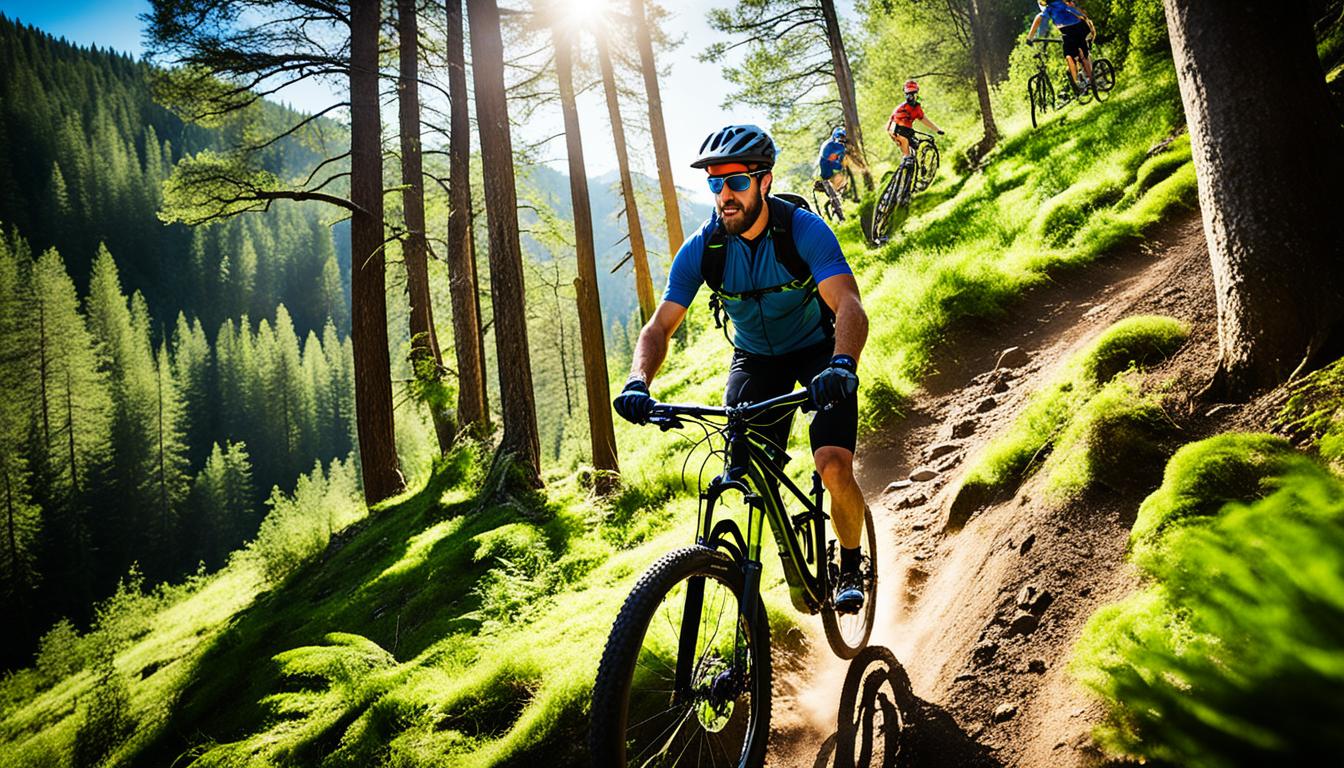Trail mountain biking is an exciting way to see the outdoors. It combines adventure with the challenge of rugged paths. This guide offers you tips and insights to improve your mountain biking skills.
Getting the right gear, like quality helmets, is crucial. You might like the Marin Rift Zone 27.5, selling for $1,760 at Jenson USA. The gear you choose impacts your ride and prepares you for the trails. To get better, check out the basics of starting with mountain biking at Two Wheeled Wanderer.
A Giro Montaro helmet, which costs between $82.47 and $149.95 at Backcountry, is vital. Safe equipment lets you enjoy trail biking while being smart on the trails. Practice and learning nature’s complexities will make you a confident rider. Get set for an exciting adventure in trail mountain biking!
Understanding the Basics of Trail Mountain Biking
Trail mountain biking is thrilling. Yet, knowing the basics ensures a safe and fun ride. The right equipment is key for good performance and safety. A bike that fits well improves stability and control. Features like proper saddle height, wide handlebars, and well-adjusted brake levers make the ride smoother.
Importance of Equipment and Material
Choosing the right bike gear makes riding more comfortable and effective. Beginners might like hardtail bikes with front suspension. More advanced riders could prefer full-suspension bikes for tougher paths. Wheel size also affects your ride: bigger wheels improve stability, and smaller ones are better for quick turns.
Choosing the Right Mountain Bike
When picking a mountain bike, think about how you’ll ride and where. Disc brakes are great for mountain biking because they stop the bike quickly, even in bad weather. Choose a bike by your skill level and the trail’s difficulty. For more help, look at trail grading systems.
Safety Gear Essentials
Safety gear is vital for a good bike ride. Wearing a helmet can cut down head injuries by 60%. Knee pads are also important. Gloves help you hold on tight and control your bike in tough spots. Buying good quality safety gear makes riding safer and more enjoyable. For beginners, it’s good to learn about safety gear. A helpful resource is choosing bike safety gear.
How to Ride a Trail Mountain Bike: Core Techniques
Getting better at mountain biking means mastering core techniques. Let’s dive into base position, braking, and how to distribute your weight right. These basics will boost your performance on trails.
Base Position Fundamentals
Starting with a great riding position is key. Make sure your pedals are flat and your body is balanced. This helps you move easily and quickly on different terrains. Keeping this position also makes controlling the bike easier and helps you stay stable while handling challenging parts of the trail.
Braking Techniques for Better Control
Braking wisely is crucial in mountain biking. Learning to use the front and rear brakes together is important. The front brake stops you faster, but be gentle to avoid a tumble. Using both brakes together helps you turn corners and go down hills safely. Practice braking gently to keep your balance and avoid skids.
Weight Distribution and Balance
How you shift your weight is critical for balance. It’s important to move your weight right when you’re going up or down hills. Lean forward when climbing to keep your front wheel down. Lean back when going downhill to stop yourself from flipping over the handlebars. Getting good at these moves boosts your confidence and control on the bike.
Mastering Advanced Riding Techniques
As riders move forward, mastering advanced skills becomes key for tough terrains. Focusing on climbing and descending is essential. These skills boost performance and the fun of riding.
Climbing and Descending Skills
To climb well, mix body position with weight distribution. Push your weight forward to keep the front wheel gripped. This makes climbing easier and gives you more control on sharp inclines. For descending, lean back to avoid falls. This balance is vital for quick downhill rides. By practicing, riders gain confidence in their skills.
Cornering Techniques for Sharp Turns
Cornering well is crucial for sharp turns. Riders should keep low to stay stable and in control. Look ahead through turns to plan your move. When cornering, push and lean into the bend and adjust your speed. Weight placement is key for good cornering. Regular practice sharpens these skills.
Improving Your Riding Skills
Bettering your skills in trail mountain biking is key. Practice with a focus can boost your skills a lot. It’s smart to work on your balance and technique first. Mastering balance reduces common errors, laying a solid groundwork for you.
Practising and Enhancing Balance
For mountain bikers, balance is crucial. Doing exercises like riding on rough paths or making figure eights helps. These improve your bike control and prep you for tough trails effectively.
Common Mistakes to Avoid
Avoiding usual cycling errors is vital. Common issues are not holding your body right and braking wrongly. Fixing these can make your rides smoother and safer. Knowing how to sit and use brakes betters performance and lowers crash risks.
Drills and Exercises for Skill Development
Adding specific drills to your routine can really up your skills and confidence. Practices on steep slopes and getting past hurdles are useful. These drills give you insights into how you ride and what to better.
Conclusion
Mountain biking is more than learning to ride; it’s a chance to enrich your mind and body. Many riders enjoy the peace they find on trails, helping them leave worries behind. They find joy in the moment, blending exercise with nature’s beauty.
Having the right gear, including safety equipment and the correct bike, is key. It can really boost how much you enjoy riding. Beginners should focus on getting good advice and starting on easy trails. Being prepared can save you from getting lost or having less fun.
Mountain biking is all about getting better and having fun. It doesn’t matter if you’re riding solo or with friends. Each ride is a chance to improve your skills and love for the outdoors even more. So, get ready, hit the trails, and enjoy every ride’s adventure!
FAQ
What is trail mountain biking?
Trail mountain biking is a thrilling sport. It involves riding over rough terrains and trails. It demands particular skills and understanding for safe navigation. This sport blends physical fitness with adventure outdoors.
How important is equipment for mountain biking?
Equipment is vital in mountain biking. The right gear boosts your performance and safety. Important things include a correctly set saddle, broad handlebars for control, and reliable brakes for smooth stops.
What type of mountain bike should I choose?
Your choice between a hardtail and a full-suspension bike depends on how you ride and the terrain. Hardtails are good for climbing with low maintenance. Full-suspension bikes absorb shocks better on bumpy trails.
What safety gear do I need for trail mountain biking?
You’ll need top-notch safety gear. This includes a durable helmet, knee and elbow pads, and gloves. They protect you from injuries and make your ride safer on tough trails.
What is the base position in mountain biking?
The base position means keeping pedals level and your weight centred over the bike. This improves your control, balance, and manoeuvrability when riding.
How do I improve my braking techniques?
To brake effectively, use both the front and rear brakes rightly. The front brake is more powerful but tricky. Practising your braking can really up your safety and control, especially downhill.
What are some tips for climbing and descending?
While climbing, shift your weight forward for grip. Lean back when going downhill to not tip over. These tips focus on where you place your body and how you distribute your weight on slopes.
How can I improve my cornering skills?
For better cornering, stay low and look ahead through the turn. Practising how to lean and push your bike into curves helps. Manage your speed and weight to handle sharp turns well.
What are common mistakes to avoid in mountain biking?
Common errors include not positioning yourself right, misusing brakes, and not staying focused. Knowing these can prevent accidents and make your rides smoother and more fun.
How can I practice balance while riding?
You can work on balance with exercises like riding on uneven ground and doing figure eights. These improve your stability and build confidence for challenging trails.
